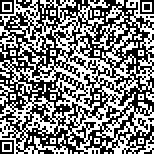| 引用本文: | 佟济宏, 王新杰, 汪 锦, 傅 锋.北京市主城区城市森林景观格局特征分析[J].广西植物,2019,39(10):1370-1378.[点击复制] |
| TONG Jihong, WANG Xinjie, WANG Jin, FU Feng.Landscape pattern analysis of urban forest in central Beijing[J].Guihaia,2019,39(10):1370-1378.[点击复制] |
|
| |
|
|
| 本文已被:浏览 4892次 下载 1963次 |

码上扫一扫! |
|
|
| 北京市主城区城市森林景观格局特征分析 |
|
佟济宏, 王新杰*, 汪 锦, 傅 锋
|
|
省部共建森林培育与保护教育部重点实验室 北京林业大学, 北京100083
|
|
| 摘要: |
| 城市森林是城市生态文明建设的重要组成部分。该文以北京市五环内城市森林为研究对象,以2016年9月16日的GF-2遥感影像为数据源,依据景观和生态服务功能将城市森林划分为附属庭院美化林、道路河流防护林、城区公园休闲林和城市郊野游憩林四个类型,并运用面向对象法提取不同类型的城市森林数据信息,制作生成专题图,同时运用Fragstats 4.2软件对景观斑块数量和构成、破碎度指数、分维数、辛普森多样性指数、辛普森均匀度指数、聚合指数等指标进行计算。结果表明:高分影像在城市森林信息提取上具有优势,分类总体精度高达90.36%,Kappa系数达0.88; 北京主城区城市森林总面积为22 514.79 hm2,林木覆盖率为32.35%; 城市森林斑块分布不均,大型、特大型斑块数量占总数比例13.62%,但面积占比高达73.20%,中小斑块的生态价值有待挖掘; 不同城市森林类型特征存在差异,附属庭院美化林和道路河流防护林为优势景观类型,但两者破碎度高,聚合度差,分布零散,城区公园休闲林和城市郊野游憩林面积占比相对较小,南部城区公园建设薄弱; 城市森林景观指数随城市拓展呈规律性变化,景观破碎度自市中心向外逐渐减小,二环内破碎度高达183.50。基于研究结果,建议北京市在城市森林建设中加强对中小斑块的资源整合,增建口袋公园; 加强道路河流防护林建设,用以连接城区公园休闲林和城市郊野游憩林等大型斑块,同时加强南部城区公园建设; 加强城市森林整体空间调控,对三环内老城区进行补植,对三环以外城市森林优化经营技术,提高整体城市森林覆盖度和质量。 |
| 关键词: 城市森林, 景观格局, 遥感, 北京主城区, 空间优化 |
| DOI:10.11931/guihaia.gxzw201803039 |
| 分类号:Q948, S718.55 |
| 文章编号:1000-3142(2019)10-1370-09 |
| 基金项目:国家重点研发计划项目(2017YFC050410101); 中央高校基本科研业务费专项项目(BLJD200907, JD2010-2)[Supported by the National Key R & D Program(2017YFC050410101); Central Fundamental Research Fund for Colleges and Universities(BLJD200907, JD2010-2)]。 |
|
| Landscape pattern analysis of urban forest in central Beijing |
|
TONG Jihong, WANG Xinjie*, WANG Jin, FU Feng
|
|
Key Laboratory of Forest Cultivation and Conservation, Ministry of Education, Beijing Forestry University, Beijing 100083, China
Key Laboratory of Forest Cultivation and Conservation, Ministry of Education, Beijing Forestry University, Beijing 100083, China
|
| Abstract: |
| Urban forest is one of the most important ecological development in the urban area of a city. Taking the urban forest in central Beijing as research object, we divided it into four types of urban forest according to its ecological service function, including subordinated landscaping forest, road river shelter forest, city park leisure forest and suburban recreation forest. Extracting four types of urban forest using object oriented method and transformed into thematic maps based on GF-2 high-resolution images on September 16, 2016. Then we analyzed the number of patches, patch constitution, fragmentation index, Simpson's diversity index, Simpson's dominance index and aggregation index with Fragstats 4.2 software. The results suggested superiority of high resolution remote sensing data, about 32.35% area of central Beijing were covered by urban forests total area being 22 514.79 hm2, about 13.62% of all patches were large patches with area being 73.20%. Unbalanced and irrational distribution on different positions and rings, subordinated forest and road river shelter forest were the dominant landscapes, however, with high fragmented landscape and low aggregation index, the other two kinds of landscapes took small proportion, especially poor in South Beijing. Besides the fragmentation level reduces from the second ring road to the fifth ring road, with the highest fragmentation pattern in the second ring about 183.50. Based on these results, suggestions are promoted as follows, making full use of small patches and build pocket park, strengthening the construction of road river shelter forest in order to connect city park forest and suburban recreation forest, increasing urban forest coverage within the third ring road and improving the quality of urban forest outside the third ring road. |
| Key words: urban forest, landscape pattern, remote sensing, central Beijing, space optimization |
|
|
|
|
|